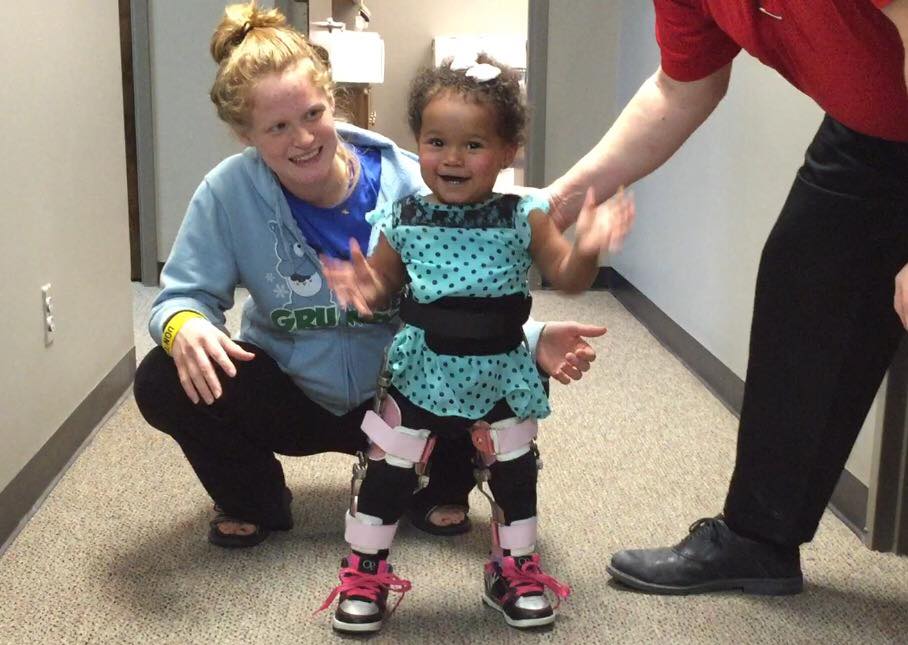At BioTech, we understand that children have special needs. It’s not the same as treating an adult. That’s why we place a special emphasis on making sure we design orthotics that allow a child to be a child – to run, explore, play, and have adventures. This makes designing devices for children a unique and, for us, enjoyable experience.
Below are commonly-asked questions parents have about fitting their child with orthotic devices. If you have any additional questions, please feel free to contact BioTech at 205-324-7897.

What are orthoses?
Orthoses are devices that are worn on the body to assist or limit motion, or reduce the load for a specific part of the body. Often times they are designed to assist in treating a medical condition, such as deformities and abnormalities.
What is an Ankle Foot Orthosis (AFO)?
An ankle foot orthosis, or AFO, is designed to treat foot and ankle disorders in children. These are also known as braces, and are designed to provide a stable base of support for your child’s lower extremities. They allow a child to develop the process of walking versus balancing, giving your child a stable base with which he or she can work.
They work by providing pressure to the foot and ankle and providing structure for these extremities. Care is provided to minimize, as much as possible, injury to skin and tissue. This is why AFOs must be carefully fitted and adjusted repeatedly as time goes on.
When are AFOs prescribed?
Common conditions that are treated with AFOs include spina bifida, muscular dystrophy, cerebral palsy, physical deformity, and other genetic or neurological disorders.
They are commonly prescribed in conjunction with physical therapy. AFOs help the physical therapist teach your child the correct foot position and allow him or her to maintain it.
What is the process of getting an AFO?
The first step is always a medical diagnosis. Following a diagnosis, your child will be evaluated by an orthotist to determine the correct size and type of the AFO to be used. Next, an impression will be created of your child’s foot and ankle, which will then be used to fabricate and fit the orthotic to your child (to ensure a proper and comfortable fit).
After the device has been created, there will need to be a series of fittings that help make sure the brace is appropriately designed and sized for the child. This is a complex process, so adjusting the device over time is extremely important.
Follow-up visits are then required to make sure the device is working as designed. Multiple visits may be required; it’s common for children to visit the orthotist three times – once two weeks after the device has been delivered, and once every three months after for two more visits.
The process of getting an AFO generally takes a minimum of seven hours in the laboratory and two hours with the patient. Fitting usually follows in 1-2 weeks. Special requirements or circumstances may lengthen this process.
How can I best help my child?
Once a child has been fitted with an AFO, he or she will require your help on a regular basis. To help, you will be given written instructions that will assist you with making sure the device is worn properly – not just for better treatment, but also for more comfort for your child.
For example, it is important to ensure that the child always wears a sock under the AFO. Also, the child should be gradually eased into wearing the device. Begin with one to two hours of wear at a time, several times per day for the first seven days. Increase wear time and frequency from there until the child is wearing it all day.
Furthermore, be on the lookout for irritation or redness that doesn’t go away within 20 minutes or so. And be mindful that your child’s foot may be irritated by the device; this is to be expected.
For further information, call BioTech Limb and Brace at 205-324-7897, where we turn disabilities into possibilities.
What should I look for in a shoe to go with my child’s brace?
Choosing the right footwear is important. The right shoe can go a long way in helping your child get the most support overall for his or her body.
A good shoe has:
- A removable insole
- A high profile heel that ideally goes above the ankle
- A wide toe box (or a shoe that is wider in size than normal)
- Ties or straps that fit snugly
- An extended shoe tongue
You want to strike a balance between fit and convenience. For example, if the brace fits easily into the shoe, the shoe may be too large. You also want the smallest size possible that will still fit the brace, because a shoe that is too long could cause your child to trip over it. It’s okay if the brace is a bit difficult to get inside the shoe. A shoe horn may help.
Your child may also wear just one brace. To help balance your child, you could use a molded insole in the unbraced shoe. You may also need to buy two shoes of different sizes.
Contact BioTech Limb & Brace today if you have any questions about BioTech Pediatrics.
